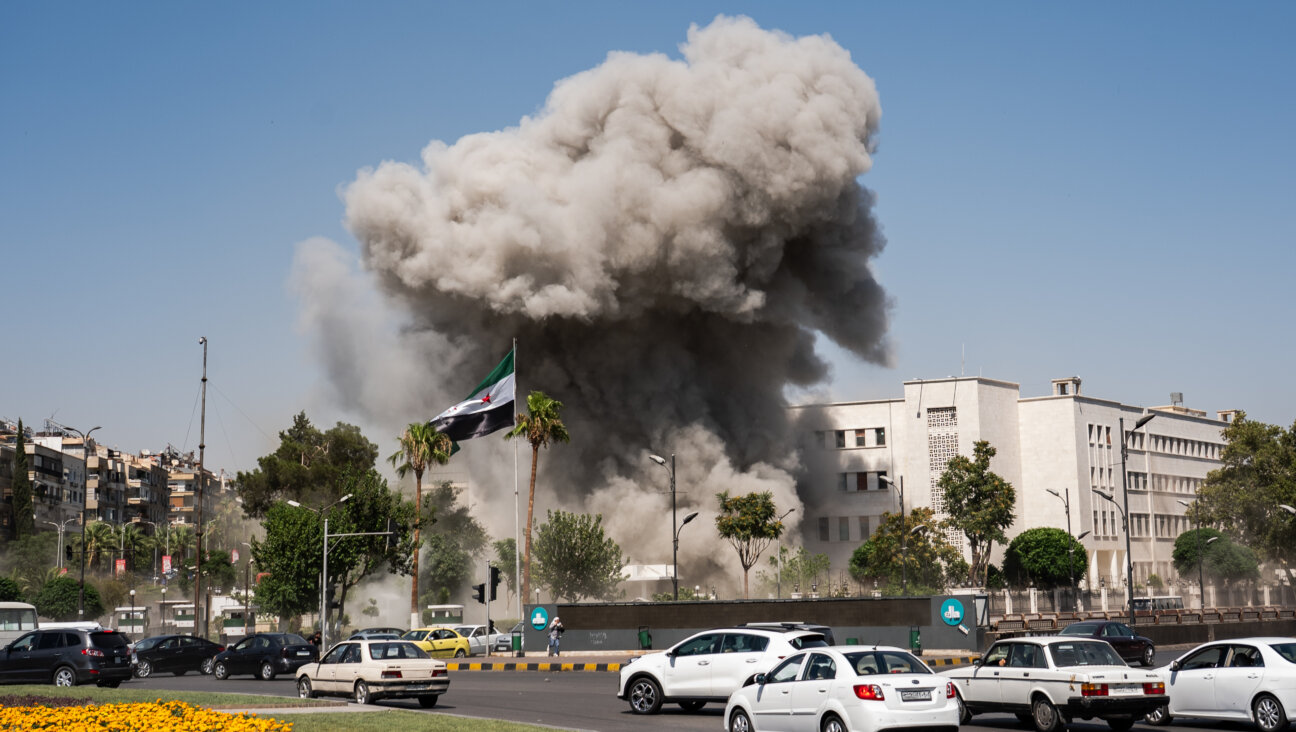From Albany to Kansas City, the Jewish Community Is Stepping Up for Refugees

Image by Getty Images
One year ago, a photograph of a small Syrian refugee boy woke up the world. Our hearts were broken open by the picture of three-year-old Aylan Kurdi, whose body washed up on the Turkish shore after he drowned trying to reach safety. A litany of photographs soon followed: refugees in the back of trucks, on trains and on foot — desperately trying to cross European borders.
For American Jews, these images eerily echoed our tragic past, and our community woke up to a refugee crisis that had been going on for years. Many were moved, and over the span of only a year, the Jewish response to the refugee crisis has become a national movement, involving thousands of volunteers, rabbis, synagogues, organizations and advocates.
Against a backdrop of increased fear and unease about refugees, the American Jewish community has stepped up to the challenge, because we understand what’s at stake.
This spring, almost 200 congregations from coast to coast joined the HIAS Welcome Campaign. The members of these synagogues have not only pledged their support for welcoming refugees, but also committed to taking action — whether by supporting families resettling in their local communities, raising awareness and education, or joining advocacy initiatives to encourage our government to take leadership — as befits a nation with a long history of welcoming refugees.
Synagogues in places as varied as Albany, Chicago, Los Angeles, Kansas City, Philadelphia, St. Louis and San Francisco are helping newly-arrived families rebuild their lives in the United States. And, thanks to the enthusiasm, advocacy, and support of synagogues in Wisconsin and Delaware, HIAS will expand its resettlement beyond its 22 current cities and begin to resettle refugees in Madison and Wilmington, as well as in other new areas.
Jewish communities are changing the geography of welcome.
As the public conversation about refugees has become increasingly susceptible to xenophobia and intolerance, American Jews have, fortunately, been learning more about the facts on the ground: admission through the U.S. refugee program remains, by far, the hardest way to enter the country. Before they ever set foot in America, every refugee under consideration for resettlement in the United States must undergo a rigorous multi-layered screening process, including extensive vetting by the Department of Homeland Security, National Counterterrorism Center, State Department, FBI and Department of Defense.
HIAS has resettled hundreds of Syrians since 2014 and found little, if any, evidence of anti-Semitism in spite of the many years of hateful propaganda under the Assad regime. Whatever remnants may have remained, were quickly erased by the gratitude these refugees expressed for the generous welcome and assistance they received from the American Jewish community.
Not very long ago, the majority of Americans did not want to welcome Jewish refugees, because of fears about security, the risk of infiltration, and unfavorable ideologies. Many Jews were turned away because the United States confused the perpetrators of violence with the victims of violence.
Of course, beyond the facts and our own history, Jewish values call us to welcome the stranger. The experience of slavery and liberation is our central narrative, and it is the reason given again and again in the Torah for why we should welcome the stranger. Today we find ourselves in a position to truly help other refugees. Today, we ask ourselves: Who do we want to be?
As the Jewish response to the refugee crisis takes hold, we can take pride in the thousands of people volunteering and advocating nationwide, and the hundreds of synagogues helping refugees through sponsoring families, locating housing, tutoring in English, holding furniture drives, and raising funds.
But there is much more to be done. Just weeks ago another photograph of a young Syrian boy stunned the world, his body encased in the debris of war, reminding us that this crisis is still raging. The U.N. Refugee Agency recently released its 2015 year-end report, detailing that the refugee crisis is now the largest in history – with 65 million people displaced from their homes due to persecution and violence.
This month, the United Nations will meet for a historic summit to address the global refugee crisis. The last time such a gathering occurred was in 1951 when international leaders came together to address the mass displacement following World War II – including millions of Jews emerging from the Holocaust. In fact, it was at that very meeting that the legal concept of “refugee” was born. Sixty-five years later, Jews from the New York City area will gather, as representatives of a larger national movement, and demonstrate our support for U.S. leadership for today’s refugees at the #JewsforRefugees Assembly.
In honor of Aylan Kurdi and the thousands of others who have died this past year trying to reach safer shores, the American Jewish community must continue to build our capacity to help today’s refugees. We must welcome refugees into our own communities and support them as they rebuild their lives. We must make our voices heard through advocating to the decision makers who set our national policy, give tzedakah, and amplify our voices through the media. We must act — as individuals, as communities and as a people.
Perhaps most difficult of all, we must continue to open our hearts and our eyes to the plight of refugees worldwide, lest we become numbed by the continued barrage of photographs of desperate people who seek safety, dignity and a place to call home. One year ago, our eyes were opened. We mustn’t go back to sleep.
Rabbi Jennie Rosenn is the Vice President for Community Engagement at HIAS, the global Jewish nonprofit that protects refugees.




















